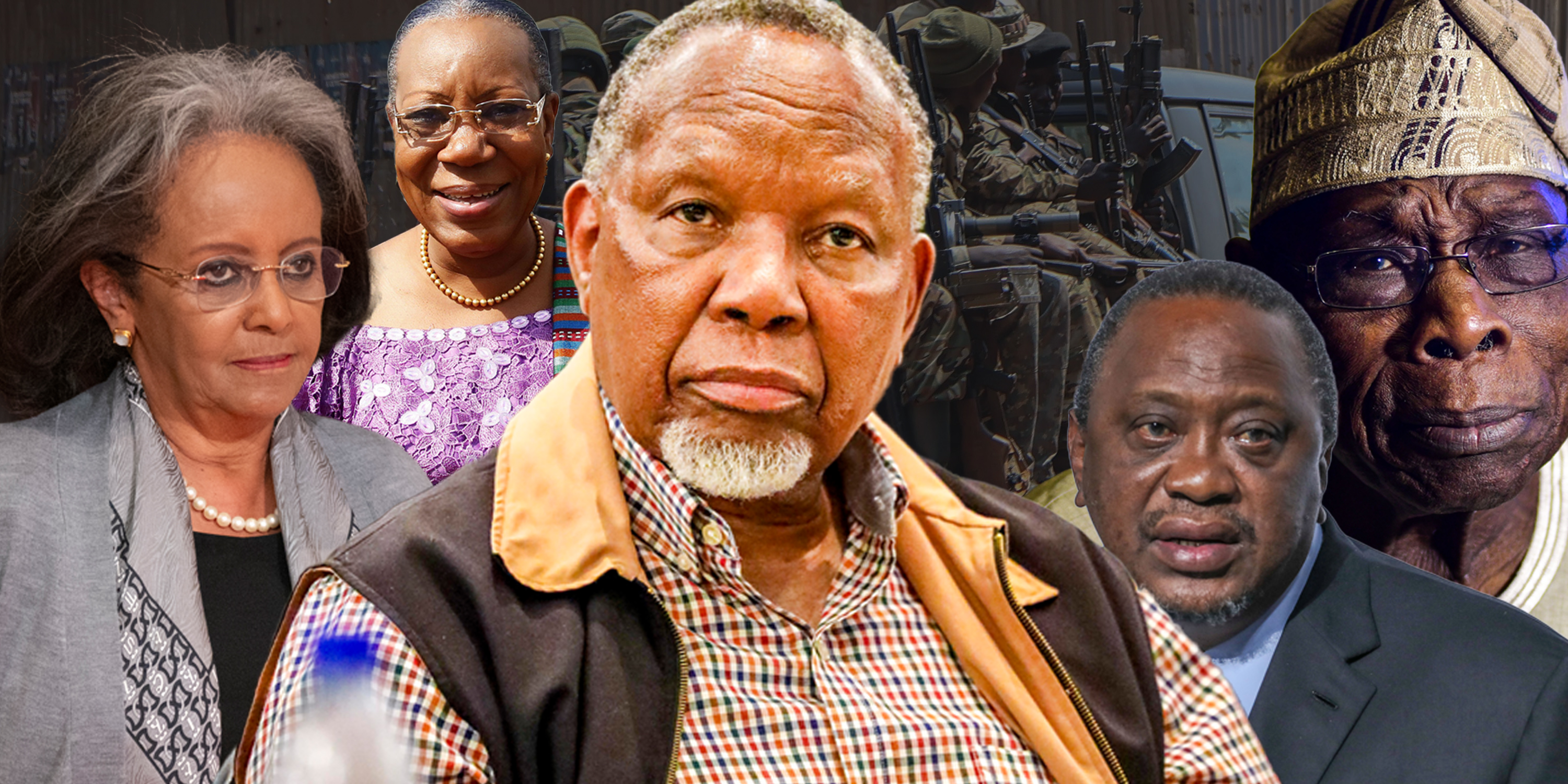President Cyril Ramaphosa and southern Africa have managed to get former South African President Kgalema Motlanthe appointed to a panel of ex-presidents who will try to mediate peace in eastern Democratic Republic of Congo.
His appointment helps to balance the panel. The original panel included no representation from the Southern African Development Community (SADC), even though it has a major stake in the outcome with many troops still trapped in eastern DRC.
The decision to add Motlanthe was taken at a virtual joint summit of SADC and the East African Community (EAC) on Monday. The leaders announced a five-person Panel of Facilitators, which included former presidents Olusegun Obasanjo of Nigeria, Uhuru Kenyatta of Kenya, Catherine Samba Panza of Central African Republic and Sahle-Work Zewde of Ethiopia.
At their previous summit on 8 February, the SADC and EAC leaders had chosen Obasanjo, Kenyatta and former Ethiopian prime minister Hailemariam Desalegn to be the facilitators, according to a leaked report.
‘Anti-SADC bias’
SADC leaders were unhappy at what they saw as a bias favouring the EAC. Though the fighting in eastern DRC has basically been between the DRC military and ethnic Tutsi Congolese M23 rebels, there has been an important inter-state dimension because Rwanda has been providing substantial military and other support to the M23.
Rwanda is a member of the EAC which has been more sympathetic to Rwanda’s cause, while DRC is a member of SADC which in December 2023 sent a military force to eastern DRC to defeat the M23, largely because it saw Rwanda’s support for the M23 as an invasion of the territory of a fellow-SADC member.
However, SADC’s intervention force, the SADC Mission in DRC (SAMIDRC), suffered a military defeat by M23/Rwanda in January. Its troops remain virtual prisoners of war in and around the city of Goma.
So at Monday’s virtual summit – also attended by President Ramaphosa – a balance was achieved between SADC and EAC representation on the Panel of Facilitators. The communique from Monday’s virtual summit said the new panel of five ex-presidents had taken into account the need for “gender, regional and language inclusivity”. Panza and Zewde are both women and both speak French.
Sources said Zewde had also replaced Desalegn because DRC President Felix Tshisekedi had insisted on a panel of ex-presidents, whereas Desalegn had been Ethiopia’s prime minister.
Peace roadmap
The summit communique said the leaders had adopted a report on the outcomes of the joint EAC-SADC meeting of ministers held in Harare on 17 March 2025. The communique noted that this included a roadmap drafted by defence chiefs detailing immediate, medium- and long-term implementation measures to attain sustainable peace and security in eastern DRC.
The five-person Panel of Facilitators will oversee a peace process which merges the existing Luanda and Nairobi processes which were run by Angolan President Joao Lourenço and Kenyatta respectively. The Angolan government announced this week that Lourenço would stand down as facilitator of the Luanda process because of new duties he had assumed as the African Union chairperson for 2025.
The Luanda process had tried but failed to bring together Tshisekedi and Rwandan President Paul Kagame to resolve the conflict. Kenyatta’s Nairobi process had tried but also failed to get the DRC to negotiate directly with the M23 and other armed rebel groups.
The 8 February joint summit decided that the DRC government should talk directly to M23, which Tshisekedi had been refusing to do, insisting he would only talk to Rwanda. As a result of the summit decision, the DRC had agreed to meet the M23 directly for peace talks in Luanda on 18 March, but the M23 pulled out at the last moment in protest against the EU imposing sanctions on some of its leaders.
On the same day, the government of Qatar announced that it had hosted Kagame and Tshisekedi for talks where they “reaffirmed the commitment of all parties to an immediate and unconditional ceasefire”, Qatar said in a statement. The unannounced intervention of Qatar in an otherwise African peace process clearly annoyed many African governments.
M23 military gains
Despite all these peace efforts, the M23 continues to expand the already wide swathe of territory it has seized from the DRC government in eastern DRC, including Goma, capital of North Kivu province and Bukavu, capital of South Kivu province.
Last week, the rebel group also captured the mining hub of Walikale, the most western town the group has taken. Several weeks ago, after the M23 took Goma, Corneille Nangaa, leader of the Congo River Alliance which includes the M23, said the M23 intended to march all the way to the DRC capital Kinshasa to topple Tshisekedi’s government. However, it is not clear if that is still his intention.
Ramaphosa said on Tuesday that “very important decisions” had been made at Monday’s joint SADC/EAC summit “and that is to consolidate a ceasefire, to install a permanent ceasefire and to get foreign forces to leave so that the DRC can get to a point where there is peace and the lives of people in the DRC can go on and improve”.
Replying to journalists’ questions after addressing the congress of the Democratic Nursing Organisation of South Africa in Ekurhuleni, he said the new facilitators “are now going to be hands-on in ensuring the various parties and stakeholders meet and negotiate… and find a peace”. He said the summit was a “very encouraging moment… there is a light at the end of the tunnel”.
What remains unclear, though, is when the estimated 2,000 South African troops still stuck in their camps around Goma will be allowed to go home. DM





